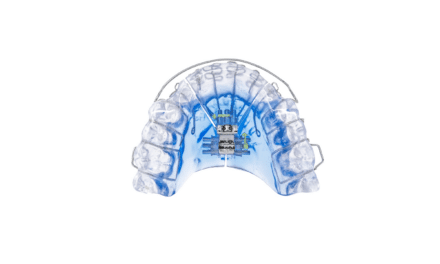A ProSomnus-supported research study furthers the literature suggesting benefits of rigid oral appliances for obstructive sleep apnea (OSA) to control the side effect of unwanted tooth movement.
Previously, Norrhem, Nemeczek, and Marklund reported the benefits of a rigid oral appliance over a flexible one in reducing tooth movement.
The new poster entitled, “Tooth movement and bite changes for a hard-acrylic sleep appliance; 2-year results using the ProSomnus MicrO2 Sleep Appliance,” used the Little’s Irregularity Index to measure the impact of a hard acrylic appliance on tooth movement over several years. It found no significant tooth movement change over a 2.3-year period using the ProSomnus device without ball clasps or a soft liner (the default build for the MicrO2). What’s more, no statistical significant change was reported in overjet or overbite when the patient’s models were placed in maximum intercuspation.
“What is interesting about these results is that the ProSomnus Sleep Device is able to achieve excellent fit and retention without the use of ball clasps or soft liners and this enables successful control of tooth movement,” says co-investigator Nikola Vranjes, DDS, in a release. “Ball clasps themselves, though retentive, can create interproximal gaps, one of the side effects we are trying to avoid.”
Co-investigator Gene Santucci, DDS, says, “Managing side effects is critical to patient and physician acceptance of oral appliance therapy, this research and the ProSomnus appliances help reduce unwanted tooth movement as a barrier to treatment. Therefore, it was important that at the University of Pacific in SF, we scanned all the models and made all the measurements blinding the patient data and time points to ensure the lowest level of bias.”
David Kuhns, VP of technology for ProSomnus Sleep Technologies, says, “This research validates the goal of the ProSomnus platform to provide a comfortable, efficacious treatment while mitigating key side effects such as unwanted tooth movement.”





Thanks for the helpful article